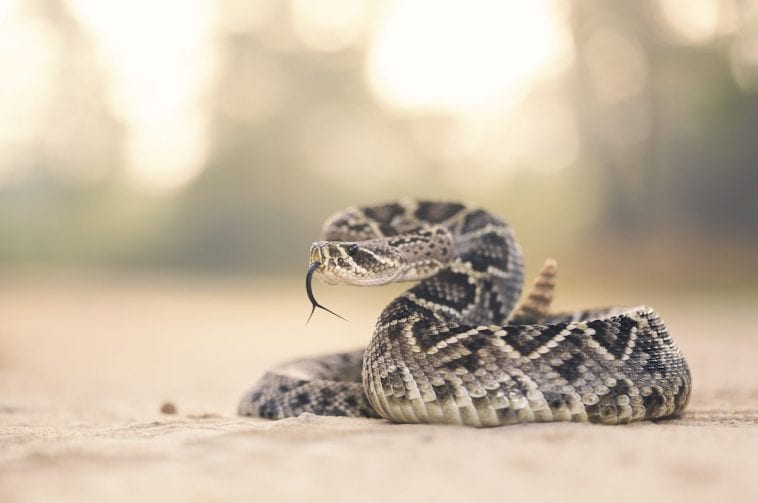Scientific Facts
| Common Name | Eastern Diamondback Rattlesnake |
| Scientific Name | Crotalus adamanteus |
| Life Span | 10 to 20 years |
| Size | 5.5 feet or more, with some, reported up to 8 feet |
| Habitat | Dry pine forests, woodlands, marshes, swamps, hammocks, burrows |
| Country of Origin | North America (endemic Southeast United States) |
| Conservation Status | Least Concern |
Physical Description
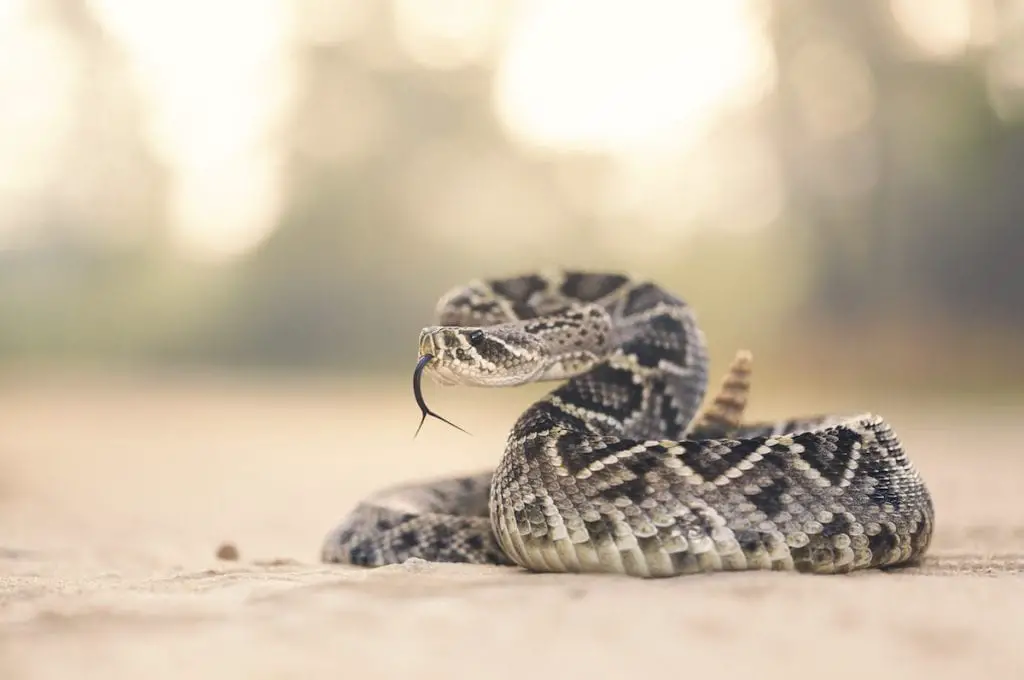
One of the deadliest venomous snakes in the world, the Eastern Diamondback Rattlesnake is the heaviest venomous snake in the entire American continent. The snake’s color has a pattern of brownish, brownish-yellow, brownish-gray or olive ground color. The pattern includes 24 to 35 black diamonds on its back. On the other hand, the belly of the snake is a yellowish or cream in color.
The trademark tail of this snake, where its name comes from, is a connection of loose segments that can create a rattling sound if shaken. Rattle tails are frequently used as a warning for possible danger, considering that it is a unique system for other animals, especially for the curious and not-so-smart living creatures. In case that these animals ignore the warning and continued to push through near their territory, rattlesnakes have no choice but to defend themselves by simply biting their intruders with a deadly venom that could paralyze the fateful animals in a matter of seconds.
Physically speaking, determining for the gender of a rattlesnake is a bit hard, especially if you have encountered it for the first time. Others simply tell that the snake’s size determines if it is a male or a female. The larger it is, the more it has to be a male snake.
On a more elaborate studying, a male snake has a longer distance between its vent (under the belly) and the rattling tail, while a female one has a shorter distance and looks slenderer and shorter.
Types
There are no subspecies of a rattlesnake nor any other mixed breed with the other snakes. However, it is closely related to the other species of rattlesnakes scattered across the globe. These snakes are all classified under the following scientific classification:
| Kingdom | Animalia |
| Phylum | Chordata |
| Class | Reptilia |
| Order | Squamata |
| Suborder | Serpentes |
| Family | Viperidae |
| Genus | Crotalus |
The only difference with the Eastern Diamondback Rattlesnake relies on the geographical setting where it is endemic, and on its habitat, considering that the Southeast United States is mostly swampy and coastal areas. There are other reports that Eastern Diamondbacks are also spotted to the north, as far as North Carolina.
Life Span
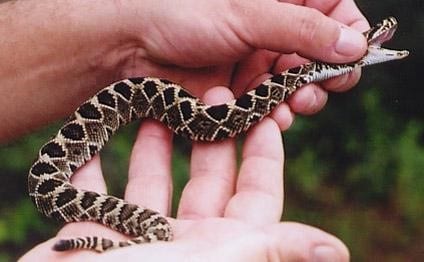
An Eastern Diamondback Rattlesnake can live from 10 to 20 years, yielding interference from humans or acts of nature.
Similar to other snakes creeping in different regions of the Earth, an Eastern Diamondback Rattlesnake has these life stages:
Egg Hatching
Snakes come from eggs. However, one must know that not all snakes lay eggs at all. Some snakes carry the eggs inside their body for two to three months, before giving birth to them. Mother Rattlesnakes have this character of delivering her baby snakes and make them live independently. As soon as the baby snakes start to go out of the mother’s body, they already carry the venom that their parents have. This feature makes them more hazardous than the adult snakes, as they cannot control their venom when they bite another creature or a human which causes serious harm and may lead to an untimely death.
A unique characteristic of an Eastern Diamondback Rattlesnake is its venom-carrying system since its birth. To be a neonate is the worst stage of a rattler’s life, considering that it is abandoned by its mother, the other siblings may get eaten by bigger predators, and the remaining baby snake has to live alone by its own- far from the help of anything and anyone.
The new hatchlings have no food to eat aside from the yolk that came from their eggs or the embryonic sac of their mother’s womb. This fluid is important for them as it is filled with important minerals that can help them to survive for days, considering that they can’t eat preys yet in the expected time.
Young Snakes
Minutes after its birth, a baby rattler should start living alone. During this point in time, young snakes train themselves on how to prey on their food. The wilderness is full of uncertainties- it is either the snake who should kill to live, or it will be killed for others to live. They may have the ability to move faster than the mature snakes, but the younger ones are still more susceptible to greater hazards as they are not fully developed to live independently.
Aware of these possible causes, the baby snakes are the most defensive in the world, becoming fearful or shy from bigger creatures, yet they are the worst defensive creeping reptile if the need arises. Remember that these tiny and somewhat cute creatures are deadly as hell because of the venom embedded in their young fangs.
On the other hand, they can already kill small predators such as rats, small birds, other reptiles, and other small creatures as well. It is in this stage that a rattlesnake develops its nature of feeding on meats, thus called carnivores.
One of the remarkable features of young rattlesnakes is their molting process which takes place for twice of four times a year, depending on the weather and the speed of a rattlesnake’s growth. The rattle tail of this snake also grows and develops, giving it a better ability to produce better sound effects as years go by and maturity takes place successfully. A downside of the shedding of its skin is the possible breaking of its rattle, making its tail permanently cut and will remain silent for the rest of its life. However, there are instances of successful rattle preservation, with an additional keratin ring included on it after the molting process.
Adulthood
It is in this stage that all snakes develop all of their survival skills, mastering the way of life, adapting to the ever-changing climate and weather, and the art of reproduction.
Adult Eastern Diamondback Rattlesnakes are known to surprise their preys and attack only once through stealthy moves. With this coordinated action, rattlesnakes effectively kill their targets not only with their fang but with their deadly venom as well. Their length and size prove their power and worth, as well as their ability to show off for female snakes during the mating season.
Interestingly, it is contrary to the belief of some scientists that rattlesnakes live independently and highly territorial for one another. There are new reports that female adult rattlers prefer to live in groups with their siblings or non-siblings, to keep themselves in better protection, than those males trying to survive on their own.
Learning from their past experiences, adult rattlesnakes have higher chances of living longer and just eventually die because of age. However, there is still a possibility that even an adult rattlesnake may be killed by bigger predators.
It is in this stage that they move further to humans and live deeply in the wilderness, far from human intervention. Adult male rattlesnakes live alone while female rattlesnakes prefer to live with groups.
Eating Habits
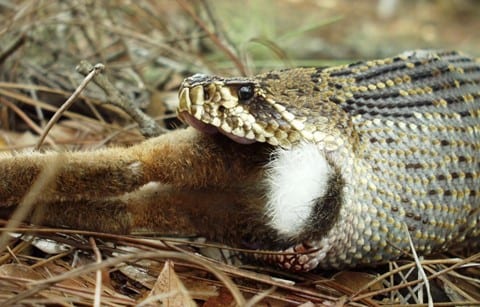
Rattlers are known to be carnivorous and prefer to kill their prey with the power of their venom and swift move. In a matter of seconds, a rodent can be caught off-guard by a hungry adult rattlesnake. Apart from their deadly venom, adult rattlesnakes also kill their preys through squeezing, especially that they have formed the infamous ball position, just like their cousin pythons when eating their preys.
Their favorite appetizers are rodents such as rats and other creepers, smaller reptiles, even the younger snakes, lizards, rabbits, squirrels, and to extreme cases, small birds at the nest.
During their younger years, baby rattlesnakes are known to devour on insects and small rats. As it matures year after year, these baby snakes become opportunistic and aim to eat bigger preys within the list of possible food choices, to the extent that they target animals bigger than them.
Rattlesnakes do not attack repetitively, instead, they only attack once on a certain prey and does not attack again if the prey does not get killed within the realms of a deadly first strike. The lucky creatures use this advantage of attacking once to survive and go far from the snake. Just like the other snakes, they use their powerful venom not only for paralyzing their preys. Also, they use it as an agent of digestion, melting the food effectively and digest it for days.
Sleeping Habits
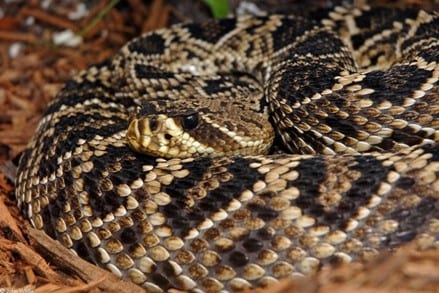
All Rattlesnakes including the Eastern Diamondbacks are cold-blooded reptiles, just like the other creatures falling on the same animal class.
They have similar sleeping habits and patterns compared with the other existing snakes. Most of the snakes have a circadian rhythm that generally describes their behavior when they sleep. Just like us humans, they follow a regular cycle on when to wake up and when to prepare to sleep. On average, their sleeping pattern comes in waves lasting for 10 hours a day or more. It dramatically increases during the days that it has to digest its prey.
However, their geographical setting affects the time that they should take some rest. For those who live in the winter regions of North America, a rattlesnake seeks shelter in the deepest parts of accessible holes or caves and keep them coiled all throughout the season and starts to take its brumation (a reptilian dormancy which is similar to other animals’ hibernation) to save its energy and avoid dying during the harsh weather condition where the food source is badly scarce and almost next to none.
Those who live in hotter places, rattlesnakes tend to go more active at night and rest on the day, even though they are not truly nocturnal.
While awake, they love to be exposed under the heat of the sun on rocky places and other open areas. It is in being ectothermic that a snake should directly get heat from the sun to keep their body temperature in well-regulation.
Development and Reproduction
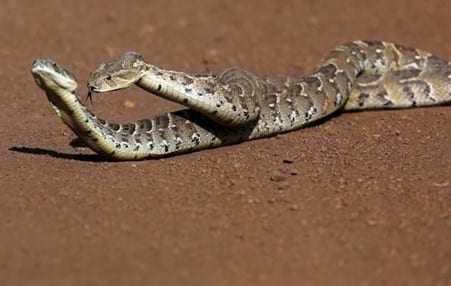
Eastern Diamondback Rattlesnakes reach their sexual maturity three years after its birth. Their mating season starts in spring, after the long and harsh winter season where food is nowhere to eat.
As the mating season commences, female snakes tend to secrete sex pheromone, giving the male snakes a hint on her right time to produce a baby. Often, these pheromones are trackable and male snakes can notice it as they leave their trails on the way to the breeding grounds or elsewhere. The twist in this process is how the male snakes fight for their supremacy over a female snake. Times that two snakes are seeking to be the mate of a single female and as this happens, they engage themselves with a combat dance.
In this dance, two male rattlesnakes intertwine with each other with their heads and necks go high vertically. In this dance, the bigger snake wins than the smaller one, forcing the loser to move away and find another partner.
The triumphant male wins and continues to search for the tracked female. As soon as the right female snake is reached by a hopeful male, the male snake tries to impress the female one and do attempts to stimulate her through frequent touching and rubbing. If the female approves, their sexual process takes place and may last up to a day with non-stop rubbing and touching while the male making the best out of it for the satisfaction of his female.
After the successful mate, the female rattlesnake may keep the sperm cells of her male partner inside her body for months before finally deciding to fertilize her eggs and activate the process of gestation in her womb for more than a couple of months. This is a manifestation of an Ovoviviparous reproduction, wherein the offspring goes out of the mother’s body completely exposed and vulnerable for the environment. In a single delivery, a female rattler can give birth for up to 10 baby snakes with a slim chance of those 10 to completely survive in the wild.
As soon as the mother snake gives birth to her babies, the mother moves away from them and lets them live on their own. The offspring is covered in a thin embryotic membrane. This covering is going to be their first food after their birth.
Behavior
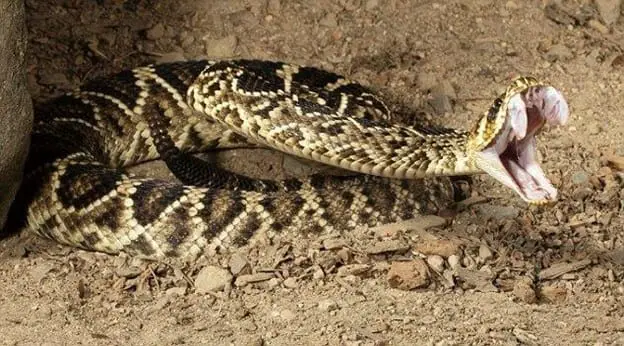
Eastern Diamondback Rattlesnakes are highly adaptable snakes, allowing them to live in snowy mountains of as high as 11,000 feet and hot places such as the Californian deserts and the Grand Canyons of Arizona, New Mexico, Nevada, and Utah. This adaptability can be regarded with their body system as a reptile and a cold-blooded animal, and their energy-saving ability to not eat up to several months through brumation.
They usually live in rocky places with ideal caves or crevices that can be used as their shelter for the next years. They are not migratory animals and because of this, they permanently stay in their area for a decade or in extreme cases, up to a century, depending on the population of rattlesnakes in a certain area.
In a general observation, rattlesnakes want to live in a peaceful condition, far from human interference or any other living creatures that may intimidate them and force them to act violently. Rattlers are known to be shy to bigger creatures. In fact, as an act of defense, a rattlesnake faces its threat as it moves backward going into the safe zone.
The reported attacks of rattlesnakes to humans have been so few for the past years because of the higher awareness and readiness of antivenin for isolated cases of snake bites to humans, to the extent that you are more likely to be killed by lightning than to be bitten fatally by an Eastern Diamondback. In a study done last year by the USA Red Cross, of the 7,000 people bitten by snakes, there are only fewer than 5 of them who were killed.
These cases, however, are only reported because of accidental stepping on snakes, considering that the diamondbacks perfectly blend with nature. At the end of the day, these things will boil down to the fact that diamondbacks are generally shy and move away from the people as it lives quietly and hates to be disturbed by ground vibrations rather than noise pollution.
Legality as a Pet
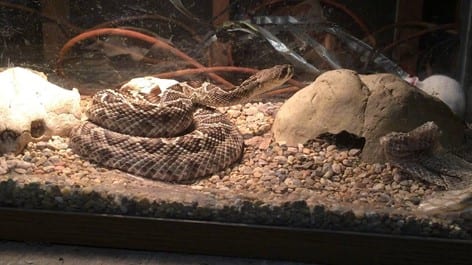
Eastern Diamondbacks are considered to be the king of all rattlesnakes in the world, looking upon their matured size. Because of this biological supremacy, it takes time to tame the rattler’s king in case that you want to pet it.
The Federal Law of the United States of America generally disallows its citizens to keep an Eastern Diamondback or any other rattlers in someone’s home. However, the states can simply ignore the law and create a State Law of their own which can be fully implemented and enforced within their jurisdictions. With the passage of Endangered Species Act, it is an advantage for those who love to keep their snakes, that the Eastern Diamondbacks are not included in the list of endangered species needed to be conserved and reproduced again for the future years.
Going down in the statehoods, Hawaii, Iowa, and New Hampshire prohibits their citizens to keep an Eastern Diamondback in anybody’s home. On the other hand, the other American states such as California and Pennsylvania, they allow their citizens to keep some snakes of different kinds in their homes, provided that they should apply for special licensing in keeping their snakes.
Health Concerns
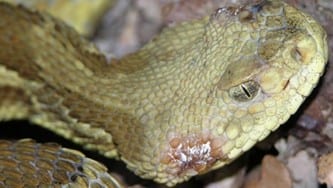
Eastern Diamondback Rattlesnakes share the same health conditions with the other snakes existing in the wild. And because they have no migratory movements, the sicknesses they gain comes directly from the other organisms living with them, especially those they prefer to eat. In a domestic setting, rattlesnakes enclosed in a safety cage can still get sick too because of its surroundings. These illnesses, if left untreated, can harm the rattlesnakes and may trigger its death.
Snake Fungal Disease
Caused by a pathogen named Ophidiomyces ophiodiicola, it surely creates great trouble for a snake by sustaining skin lesions and thick blisters. If left untreated, this disease can deform a snake’s face, prohibiting it to consume any food and may die on the latter due to starvation.
Unfortunately, this disease is highly fatal to rattlesnakes, including the Eastern Diamondbacks. Because of this, a homegrown snake must be rushed immediately to an animal facility that can treat snakes’ illnesses.
Infectious Stomatitis
This is one of the common sicknesses of rattlesnakes both in captivity and in the wild. It is the infection of their oral cavity, characterized by pus on their lips and in their mouth. If the worst-case happens, a rattler suffering from this condition may have a swollen mouth and will show open-mouth breathing.
This sickness is not a primary condition but is an underlying problem to a bigger issue such as overcrowding, improper nutrition, and sudden changes with the temperatures or climate.
Parasites
It is a normal condition for pet snakes, including the diamondbacks, to have their internal and external parasites. However, these must not be underestimated nor ignored as they may lead to more serious illnesses with the diamondbacks. Manifestations of the parasitic infestation on a diamondback can be suppressed through a more specialized medication, considering that this type of rattlesnake hates to have physical contact with humans.
If left unaided, these parasites may cause blisters, breathing difficulties, mouth rot, weight loss, and even death.
Blister Disease
Blistering is a common problem seen by snake owners in relation to the cleanliness of the terrarium being used to house their diamondbacks. The same goes with the other species of snakes being kept as a pet in other regions of the world.
The lesions of this disease mostly occur on the belly of the snake, making it quite hard for the owners to notice whether their snakes have already acquired the disease or not. If left untreated, this fluid-filled blisters may attract other parasites and may kill your diamondback within a short period.
Septicemia
Also called toxemia, is a fatal condition where the snakes are being poisoned within their bloodstreams by the toxins they secrete and slowly invade their internal organs. This condition is almost impossible to be survived for, as the rattlesnakes produce strong venoms which can paralyze their preys within seconds.
This is characterized by lack of appetite, difficulty in breathing such as the open-mouth, lethargy, and discoloration of their scales near the belly.
Preventing Illnesses
The good thing with snakes is that they are not so demanding for their needs. In fact, they just need the basic things to feel before they can feel comfortable with the provided terrarium for them.
Cage
An Eastern Diamondback Rattlesnake demands a spacious cage as a single rattler could grow quickly and reaches its maturity, three years after its birth. It must not live with another snake inside a cage as this will surely mean death for one of them. Remember that they are very territorial and loves to live alone between rocky shelters or crevices.
Water
Just like us humans, rattlesnake needs water for hydration and regulation of body temperature. Looking on their scaly skins, one can say that a snake will not produce its own sweat. With this, they will rely on water for cooling down and body system regulations.
Temperature and Humidity
Rattlesnakes are scattered across the North and South America, living as hellish as on top of a snowy mountain or under the scorching heat of the sun in the deserts. However, as they try to survive for a lifetime, they must keep their ideal body temperature to function well, especially that they are generally slow yet stealthy in nature.
Nutrition
Rattlesnakes are carnivorous and do not eat any vegetation at all, even in desperate cases. Because of this, one is highly advised that he or she must be knowledgeable about what kind of animals do rattlesnakes eat. One must avoid giving any rodents from uncertain sources, which can harbor diseases to the snakes themselves. They may have an effective immune system against other illnesses and other defense mechanisms to dominate over possible chemical dangers, but a rattler is weak in dealing with viruses and other related microorganisms which carry fatal sicknesses.
Unfortunately, rats in the urban setting can’t be simply eaten by rattlers anymore, considering the nature where they live, what they eat and how do they live daily in the sewerage systems under the cities.
Hibernation
Like the other reptiles, Eastern Diamondbacks that live in the regions of the Americas that experience winter, undergo brumation. It is the reptilian way of hibernation where the said animals take a break from all of their daily activities for the next few months, to give way for the great winter season which lasts for the last quarter of a year.
Brumation is caused by the ectothermic condition of the reptiles or simply being cold-blooded animals. Rattlesnakes are no excuse of that condition and because of this, they heavily rely on the environment to successfully regulate their body temperature and manage to live longer. During this time, rattlesnakes are lethargic and completely stops in doing any daily activities to save their body in sustaining colder temperature which is hard to eradicate in the middle of a winter season.
During captivity, there are reports that snake owners try to stop the cycle by simply adjusting the room temperature in the terrarium and keep the snakes awake. However, it is highly recommended to let the snakes continue practicing this important biological cycle to keep the snake healthy and live for a longer period. Altering this cycle may have a bad impact on their health, thus leading to serious and chronic conditions.
As the rattler experience the Brumation Cycle, it will eat lesser, sleep longer and gradually stop on making its daily movements and keep on sleeping inside your provided rocky shelter. During the brumation cycle, a rattler will not gain nor lose weight because of sleeping for a long time. This cycle only pauses the life of a reptile, not completely changing it at all.
Shedding
Remember that the shorter and smaller the diamondback is, the more frequent that it will shed its skin to give way for its growth.
The process of shedding off their skin is called molting or ecdysis, where a reptile changes its former skin with a better one that can give more space for the said reptile to grow. Ecdysis happens because of the inelastic property of a reptile’s skin, stopping it to grow bigger for the future years. Because of this restricted feature, most of the reptiles existing in the world are required to molt their skin to continue growing bigger from its previous molting process.
A young Eastern Diamondback can molt for four times a year, emphasizing its growth speed throughout the year, despite its independent and solitary lifestyle, far from interference of other creatures.
As it grows older, the molting process decreases annually, with some only happening once a year.
One cannot predict when will the molting process may take place. However, the first hint of an upcoming molting time can be seen with the color of your snake’s eyes. When it starts to turn to a blueish white (far from dark green) and its skin looks dull, chances are that the shedding will happen days from the time you have spotted these hints from your snake.
For the rattlesnakes, it is an important thing to keep its cage with enough humidity and availability of lukewarm water in the cage. It would be a great help for the snake if its owner can provide a moist shedding box for the rattler. This box should be filled with damp paper towels to encourage the snake shed on that spot where humidity is optimal and of great volume to make the process more successful. In the absence of an improvised shedding box, one can simply add a basin with warm water to make the process faster to complete, while making your snake healthy and safe in the entire process.
It will be also helpful if one can spray in the terrarium to increase humidity levels.
The last thing to do is to add rough materials inside the terrarium which can help your snake in rubbing off its flaky skin. Twigs, tree barks, stones, and other coarse materials can help your rattler finish its business in shedding its skin.
To complete the process, you may visit your vet to check the condition of your rattler after it finishes its molting process
Habitat
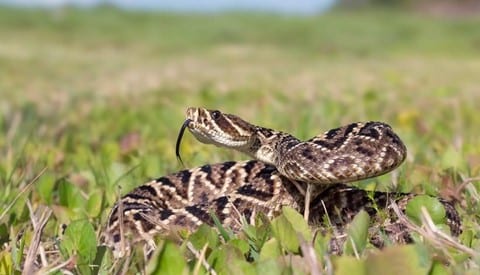
Rattlesnakes usually live in cool and dark areas, such as caves, spots between big rocks, and underground holes created by the other animals who used to live there.
With this orientation, an ideal terrarium for a rattlesnake must be of a rocky or sandy place. Avoid putting twigs or barks where the snake can crawl on, as this may serve as a way of its escape. Rattlesnakes are slow in movements, but when they move, it will be a clean, swift, and silent move- characteristics which a stealth mover do.
Secure the top cover of your terrarium to avoid escaping. Chances are that your caged rattler may look for other places where they can eat better foods than what you are serving. Be prepared with this and choose the top cover wisely.
Lighting and humidity
Rattlers are cold-blooded. With this, the temperature inside the cage must be highly favorable for them and their body systems.
Lighting must be available regularly, ranging from 12 to 15 hours a day, depending on the season. Its light must be scattered evenly in the cage, to avoid discomfort and stress with your rattler. During the daytime, rattlesnakes tend to literally do sunbathing to help them regulate their body temperature. With this, one must also prepare a rocky spot to help the rattlesnake go nearer with the light and let the snake be warmed by your light.
Temperature
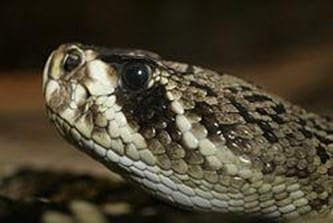
The Eastern Diamondbacks prefer the temperatures ranging from 77 to 89 degrees Fahrenheit or 25 to 31 degrees Celsius. Remember that these are cold-blooded animals and are highly reactive to heat. With this, they should go to colder places during the summer to avoid a sudden death because of the heatstroke. For rattler lovers, one must retain a room temperature not exceeding 30 degrees to keep the rattlesnake live under optimal and favorable conditions for a longer period.
Tank Bedding and Accessories
A rattlesnake is used to live in rocky places, and because of this, it is highly recommended that the bed of your terrarium is filled with rocks and sand. This coarse yet soft bed encourages the diamondback to have a relaxed way of lifestyle, instead of having a long time stressing itself in the cage, leading to an untimely death. Avoid putting too many accessories aside from its rock shelter and some platforms to keep obstructions on the floor in minimal concern and to offer a wider space for your rattler to move upon.
Sanitation
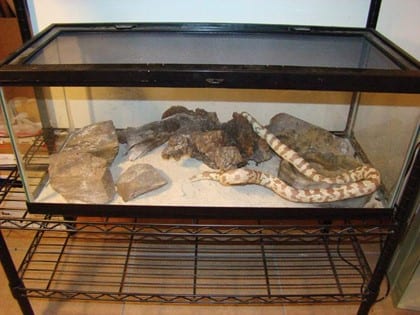
Rattlesnakes are sensitive to fungal infections. With this, it is a requirement for its owners to keep the cage clean at all times. Avoid littering in the cage, aside from the meal that you are going to serve for the snake. Avoid moving the objects inside the cage with your bare hands as the rattlesnake may bite it out of nowhere due to the distance of the snake from what you are fixing and cleaning. As much as possible, use long sticks or holders that can’t be deformed by the powerful bite of a rattler.
Also, avoid putting fragrant flowers inside the cage as this may affect the appetite of a snake during its hunger. It can also affect the sense of smell of the snake, forcing it not to go out from its rock shelter anymore.
Natural Environment
Eastern Diamondbacks live in various spaces of Southeast United States. Some live near swampy lands of Louisiana, others in the pine forest of North Carolina, and some in the coastal scrubs of Florida. With these habitats, it is encouraged that a rattler of its kind is placed in a terrarium with sandy bed and rocky shelters or woody chunks of tree barks.
Hydration
Like the other reptiles, it is best for a rattlesnake to have access to water bowls, to keep its body in perfect temperature regulation and stamina. Times that your rattler has to drink from it, so be ready in preparing the clean water for its hydration. Sometimes, your snake may go near to the water bowl just to make its body feel a bit colder and balanced from the heat that your artificial lamp provides.
Availability- How to Get One?
Eastern Diamondback Rattlesnakes are not as easy to buy as the other reptiles do in the present pet shops or animal centers. Due to its venomous trait, one must be able to prove its ability to handle such kind of snakes before taking the full custody of it. As mentioned earlier, there are several states in the USA that require someone to have a snake license first before allowing to take care of different snakes, from the deadliest to largest and smallest to most gentle species.
In other states, there are available species in reptile shops that specialize in selling snakes, lizards, and other reptilian species that can be used as a pet.
To cut these short, the availability of an Eastern Diamondback depends on where you live. If your place allows it, be prepared in buying it with an expensive price, as this diamondback is the king of all rattlesnakes in the world. Its price depends on its length, the bigger, the heavier, the more dangerous and the more expensive it is.
How to take care of a Diamondback Rattlesnake?
One must not take a rattlesnake for granted. All of their kinds are venomous with some categorized as highly dangerous and deadly to humans, including the Eastern Diamondbacks. With this given fact, here are some tips to take care of an Eastern Diamondback if chosen as a pet:
Minimize Human Contact
This is a requirement needed to be followed at all times. Eastern Diamondbacks are not domesticated animals like cats and dogs. They cannot be tamed even if you take care of it from the time it is a hatchling. They don’t recognize someone as their lawful master, for they are highly territorial on their own.
Let them live alone in your cage and do not attempt to feed them with your bare hands. When giving food, always prepare your snake hook. When giving them a bathing time, use your snake hook as well.
Give Them Clean Food
Their diet ranges from rodents to insects and birds. There are cases that rattlesnakes in the wild eat bigger animals than their own size. In captivity, it is recommended that Eastern Diamondbacks should eat rodents such as mice, rabbits, and big insects.
Bathing Time
Eastern Diamondbacks must have its bathing time as well. It is a challenging part for rattler owners to bathe their own snakes. It may require you to make a special container where it can take some moments to be soaked with warm water. Avoid submerging them in cold water to avoid any changes with behavior and sickness with the rattlesnake.
FAQ Section
How much does a rattlesnake cost?
Depending on their size, Eastern Diamondbacks are quite expensive, with its price starting from $100 and above. As a rattler grows bigger, its price goes higher.
Are Eastern Diamondbacks able to remember its owner?
They can, but they won’t tell you when. As we mentioned earlier, Eastern Diamondbacks love to spend its time alone, far from too much human intervention. Because of this, do not attempt to play with your Eastern Diamondbacks or you might be caught in danger for mishandling.
What foods do they eat? How many times do they need to eat in a week?
It is recommended for them to feed on rats, mice, rabbits, and small insects. A baby rattler must eat once a week, while an older one can eat once every two weeks, depending on the size of the food given to them.
Can they swim?
Eastern Diamondbacks are capable of swimming, despite their size and weight. Take note that when they do, they keep their heads and rattle tails above the water, while their body is submerged. In the event that you have to bathe your rattlesnake, you don’t have to worry if it may drown because it can save its own. Remember, it is the king of rattlesnakes in the Earth, and it is a trait that a king can manage to live with himself.
Are they able to hear?
Yes, they can. However, all snakes don’t have ears. They rely on the vibrations that they can feel with the help of their tongues and noses. Their scales are also sensitive to anything and everything.
How many times do they poop?
The rule of thumb with snakes is they have to defecate 5 to 7 days after they consumed their food. That is a good indication of their healthy metabolism. In extreme cases, it may happen for a longer time, considering that each rattlesnake differs with the speed of how long will they complete their meal.
With the younger snakes, they may defecate once a day. As they grow older, their metabolism may get slower.
Do they love to be petted?
Unfortunately, no. As mentioned earlier, Eastern Diamondbacks are territorial, shy from human touch, and loves to go alone. They can be considered as introverts in general terms.
Is it natural for Diamondbacks to smell?
It is, considering that they leave their scent with the trails they do when traveling, but when in captivity, take note that the stronger their scent is, the higher the chance that you fail with their hygiene. This is why you should keep the cage clean at all times, let it consume clean food, and have access to clean water. Cleanliness is a great requirement. It must be followed at all times.
Can I bring the snake out of its cage regularly?
It will be hazardous for you as an owner and the snake if you do this most of the time. Eastern Diamondbacks do not love moving out a lot of times during its captivity. It can be easily stressed and change its behavior due to the unnatural human intervention. Do not bring your snakes outside, as if it is a dog that needs to be roamed around or strolled in a park.
Remember that when you chose to keep a snake, the room must be fully enclosed and has safety features to avoid snake escape. There will be chances that your rattlesnake will try to escape, that’s why keeping it in an enclosed and tightly secure terrarium is a must.
In case of a snake bite, what should I do?
In the event of mishandling and your pet has bitten you. Immediately return the snake in its enclosure and call 911 for emergency action. You have to be brought to the nearest hospital or medical facilities that issues antivenin for snake bites.
If you are trained for this unwanted case, have your limbs tied on its end connecting to the rest of your body with a clean cloth to suppress the immediate spread of the venom in your body. Keep calm and relaxed to prevent the blood flow in your body move faster, making the venom possibly spread quicker and may harm you in the end.
Snake handling is not an easy task, it takes time to master this skill so be careful in handling your pet.

